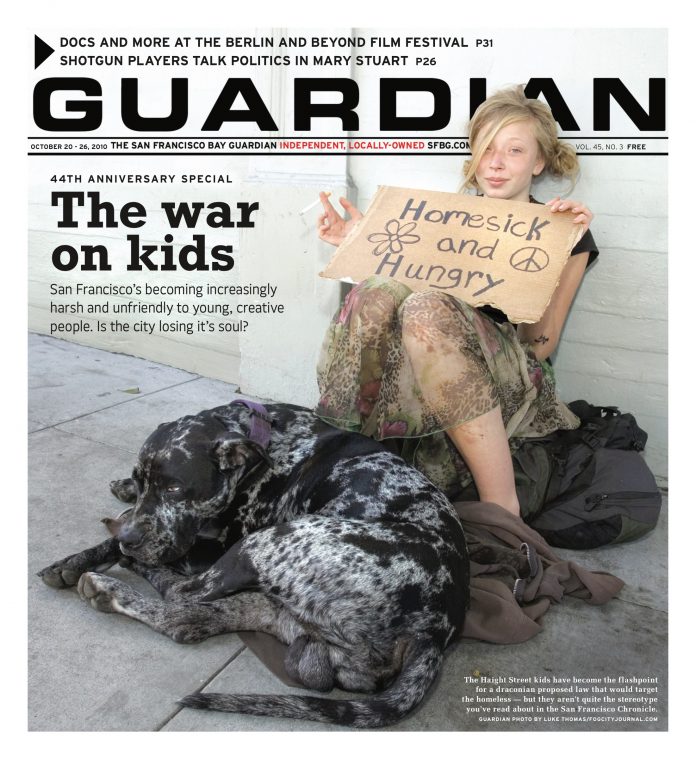arts@sfbg.com
DANCE When Diaghilev’s Ballets Russes premiered Mikhael Fokine’s Scheherazade in June 1910, Paris exploded. Not only had the choreographer forsaken the hallowed halls of classicism, he had put on stage the most sensually explicit ballet ever seen in that city’s stage. Its orientalism and Leon Bakst’s exquisitely lush design influenced fashions and design for years.
None of this impressed Alonzo King when it came to his commission from the Monaco Dance Forum for its Ballets Russes centenary in 2009. King drew upon versions of One Thousand and One Nights that have floated around the Middle East and India for centuries. What he has picked up is the delicacy of the storytelling, in which one fable spins out of another. King’s Scheherazade feels as evanescent and shimmery as a spider’s web; yet its resilience comes from the way he deploys his dancers. The skewed balances, fractured lines, and abrupt transitions are intended to open doors to deeper perception of the potential that King sees in everything, dancers included. Here — until the flattish ending — they were enveloped in a transparent lucidity, no doubt much enhanced by Axel Morgenthaler’s sophisticated lightening.
King kept traces of the Arabian Nights narrative in which Scheherazade ultimately wins her life and marries the King. Anchoring the choreography is an extended “Pas de Deux for Scheherazade” (Laurel Keen) and Sharyar (David Harvey) that aspires toward myth. It is physically fierce as well as lyrical, passionate yet also impersonal. These dancers could be lovers, male/female principles, or natural forces. They reject entanglement even as they acknowledge its inevitability. When Keen grabs Harvey’s head with both hands, you don’t know whether she is about to tear it off or embrace it. Hanging onto limbs, crawling between legs and swimming on arms, these two equals struggle to keep apart until the tender resolution. Expressively complex, Harvey has finally stepped into his own as a King dancer; longterm company member Keen seems to become stronger the longer she keeps dancing.
A potent presence was Corey Scott Gilbert who, in his long red robe, flowed through Scheherazade as perhaps a guiding spirit. In Fokine’s version, the sultan’s wife fell in love with a Nubian slave, danced by Nijinsky in black face. The racism of that portrait has rendered the ballet unperformable. Tall, strong, with a reach that seems limitless and an ability to hone in on the smallest detail and be vulnerable, Scott Gilbert seemed a tribute to and vindication of that slave.
Scheherazade opens on a note of intimacy. Keen is surrounded by three attendants (Meredith Webster, Ashley Jackson and newcomer Jeannette Diaz-Barbuda) who introduce themselves in personalized solos as she, stretched in a classic oriental divan pose, watches them from the sidelines. This gentle woman-centeredness set the tone for the rest of the ballet. Jackson became the first among equals, exquisite in her phrasing, and drawing strength from who knows where.
Not that King shortchanged his men. Ricardo Zayas shot through his variations like a rocket. Following Keelan Whitmore as he wove himself in and out of ensemble work was one of the evening’s great pleasures. The work also gave showy opportunities to new apprentices Michael Montgomery and Christopher Bordenave.
Composer/percussionist Zakir Hussain incorporated elements of Rimsky-Korsakov’s Scheherazade into a rich mellifluous score of world and electronic music—performed live — that immeasurably contributed to King’s choreography. As did the opulent but ever so restrained designs for set and costumes by Robert Rosenwasser and the fabulous Colleen Quen. By following Diaghilev’s dictum that music, design, and dance need to support each other for a unified theatrical experience, King paid the master impresario his most appropriate tribute.
Unfortunately, Scheherazade ended on a flat note. A free-for-all involving the company and assorted additional dancers flooded the stage with, judging from the music, what was supposed to be an atomistic hymn to joy. A great ensemble choreographer King is not.
SCHEHERAZADE
Thurs/21–Sun/24, $25–$75
Novellus Theatre
Yerba Buena Center for the Arts
700 Howard, SF
(415) 978-2787

